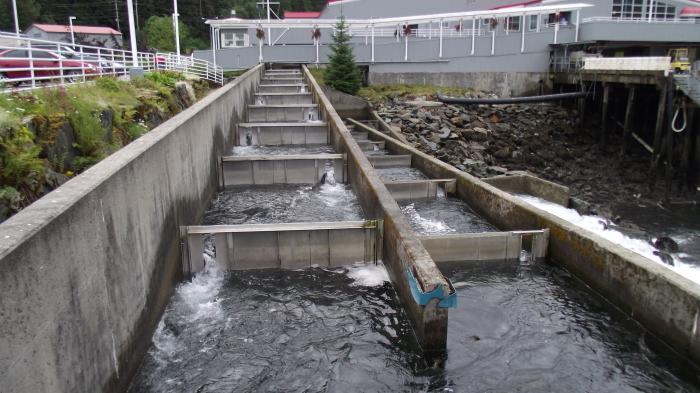Two proposals to limit production of hatchery salmon were rejected by the Alaska Board of Fisheries at a special meeting on Oct. 16 in Anchorage. Both claimed that hatchery fish are straying and intermingling with wild stocks and are out competing wild salmon for food in the open ocean.
Typically, over 30 percent of Alaska’s total salmon harvest each year are fish that began their lives in state hatcheries, mostly pinks and chums. Longtime studies by state fishery scientists show some straying of the fish but in very small numbers.
A proposal by the Kenai River Sport Fishing Association asked the board to rescind an authorized 20 million increase of pink salmon eggs at a Prince William Sound hatchery. The group claims the fish threaten wild sockeye and king salmon bound for their region. It lost by a 6 to 1 vote.
Another proposal by former fish board member Virgil Umphenour of Fairbanks asked to cut statewide hatchery egg takes by 25 percent. That failed by a 5 to 2 vote.
According to the North Pacific Anadromous Fish Commission which has tracked salmon abundances and catches for five countries for more than 25 years, salmon catches throughout the N. Pacific remain near all-time highs and Alaska’s take tops them all.
The NPAFC also tracks releases of hatchery salmon from Canada, Japan, Korea, Russia and the U.S. The five countries released just over 5 billion fish in 2017, similar to numbers over three decades.
U.S. hatcheries released the most salmon at 37 percent, followed by Japan at 35 percent and Russia at 21 percent. Chum salmon made up 64 percent of all hatchery releases, followed by pinks at 25 percent.
The half day Fish Board meeting drew lots of support from fishing stakeholders — when people in the packed room were asked how many depended on hatchery fish for their livelihood, over half stood up.







